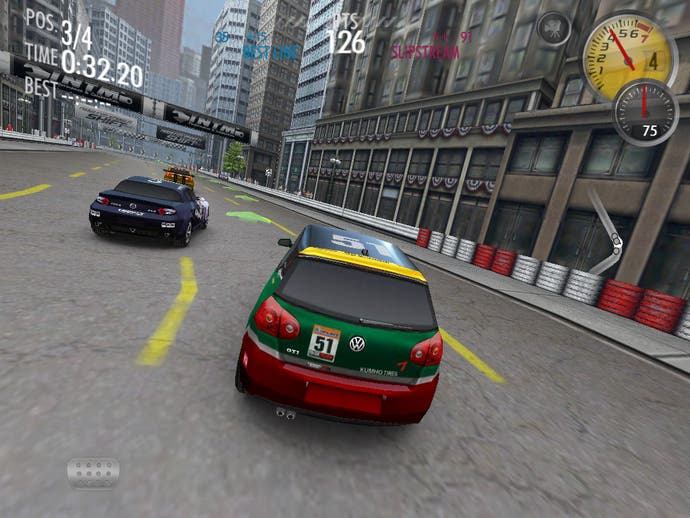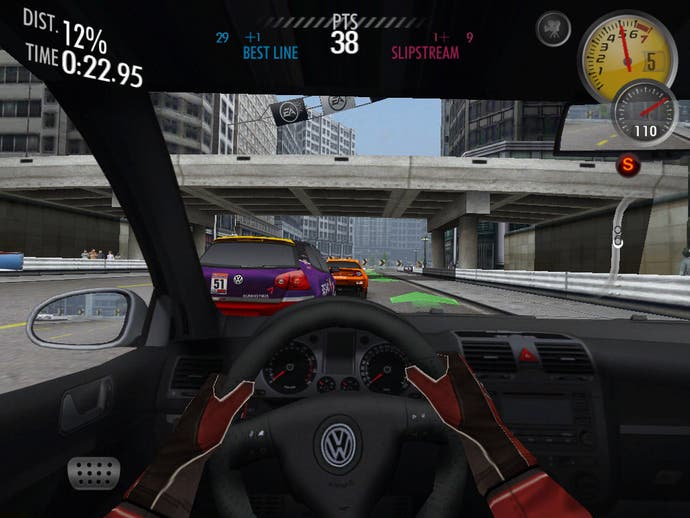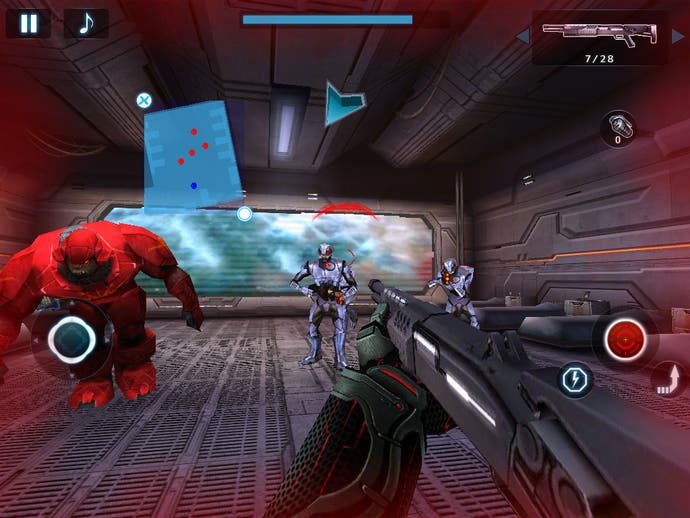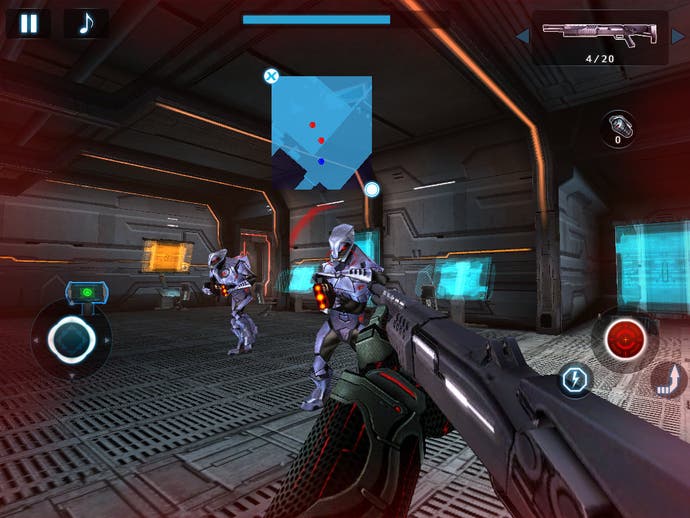Digital Foundry vs. iPad
The next big small thing dissected.
Moving onto the gaming side of the iPad and we find ourselves with a very strange situation. What we have here is an impressive 1024x768 screen that's literally "in your face", meaning that the screen real estate occupies more of your field of vision than even a colossal plasma TV would when viewed from distance in the average living room.
In basic terms this means the potential for greater levels of immersion, but at the same time, image quality therefore becomes even more important.
Here's where things get sticky, because it's fair to say that the vast majority of the 3D titles available for the iPad are derived from games with art designed for the miniscule iPhone screen. Therefore we see low levels of geometry, low-resolution textures, very basic lighting, an omission of shadowing on the vast majority of titles out there, plus some painfully apparent aliasing.
Where games have been redesigned for the iPad - and typically this comes down to the 2D games - we see a genuinely impressive improvement. Flight Control HD for example, contains some lovely 2D artwork designed especially for the iPad, and the iPhone levels are included too - blown up of course, but completely redrawn to match the native res, so still very nice-looking.
Flight Control HD is going to be orders of magnitude more pricey than the 59p original, but it's a superb game; Firemint has worked ceaselessly to improve and promote it and assuming the $4.99 price translates fairly into GBP, it's a must buy. Similarly, iPad renditions of other 2D classics like Fieldrunners, Plants vs. Zombies and Angry Birds work well. Also deserving of a special mention is Labyrinth 2 HD - a 2D/3D combo that is simply beautiful.




3D performance remains an issue to the point where one highly placed mobile industry source told me that the iPhone 3GS should be regarded as the pre-eminent handheld platform from Apple, while the iPad is a more of a browsing, apps and e-book reader. So what's the score here from a technical perspective? How does the iPad stack up against the 3GS?
The bottom line is that the iPad is clearly a faster machine with a higher specification than the 3GS: the CPU runs at 1GHz vs 600MHz in the 3GS, while the PowerVR SGX535 common to both machines is downclocked in the phone at 150MHz up against what is believed to be 250MHz in the iPad.
The GPU aspect is crucial: while the iPad's graphics core is clearly faster than the 3GS's, it needs to fill 786,432 pixels up against a mere 153,600 on the iPhone. The problem we are seeing here is that 1.7 times the power needs to accommodate over five times the fill-rate. With the arrival of the 4G iPhone in weeks to come we can expect the specs gap between phone and tablet to shrink still further.




There are also some signs as to the potential of the machine in the games we have now if you look carefully enough. Geometry Wars Touch is an extremely close conversion of Geometry Wars 2 on Xbox 360, if you can hack the on-screen touch-based thumbsticks.
Most people hate them, but I get by OK with this setup - the only issue is that friction from the screen affects your actions quite profoundly, to the point where a well-chosen screen protector that allows your fingers to glide more smoothly over the touch-sensitive surface could well make a hell of a lot of difference.








